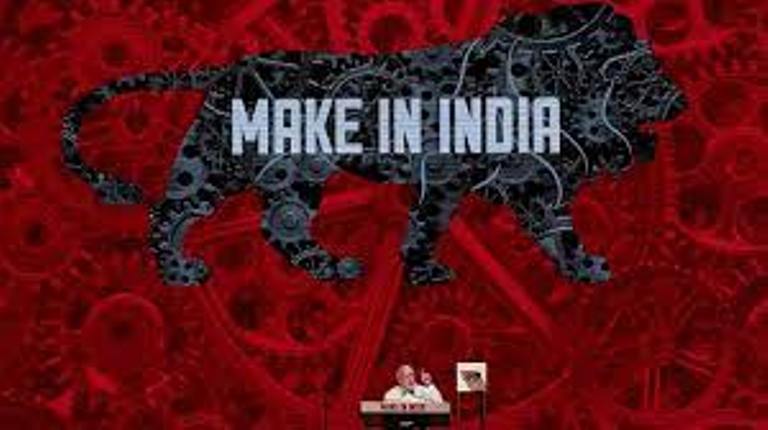
India’s all too frequent disconnect between ambition and reality
William Bratton
Published:27 May 2021, 12:41 PM

India’s all too frequent disconnect between ambition and reality
Narendra Modi speaks during the inauguration ceremony of the “Make In India” week in Mumbai in February 2016: India has failed to develop and execute a holistic, comprehensive and coordinated economic development plan. © Reuters
Courted by the U.S., Europe, Japan and even Russia, India’s geopolitical importance has been rapidly elevated over recent years.
Whether as a member of the Quad, the emerging Asian bloc, or as a participant in the potential D-10, a grouping of the leading democracies, the country is now viewed by many as a significant player in the world’s evolving balances of power.
This newfound role within the global arena has been accelerated by the convergence of multiple interrelated factors. One is the realization of Indian Prime Minister Narendra Modi’s more muscular approach toward foreign policy and his nationalistic desire for the country to be recognized as a great or “leading” power. Another is the West’s search for regional strategic partners to bolster their efforts to counter China’s growing regional influence.
From an external perspective, India does appear a natural choice to underpin a regional anti-China bloc. It is, after all, now the third-largest economy in Asia and the sixth biggest globally. Its military budget is second only to China in the region and is now the third-largest in the world. Furthermore, its bilateral relationship with China has come under increasing strain in recent years and as a result, it seems more willing to develop stronger allegiances with the West.
The problem, however, is that relative size alone is not sufficient to exert geopolitical leverage, nor to secure great power status. Geopolitical influence is not achieved in isolation but is highly dependent on relative economic importance and power. And unfortunately for India, there is a significant and persistent disconnect between its increasingly grandiose foreign policy aspirations and the underlying state, capabilities and relevance of its domestic economy.
This statement may seem at odds with the widespread expectations that the country will achieve rapid growth again once it recovers from the current pandemic. But any post-COVID rebound should not be seen as indicative of its longer-term potential: many of the drivers of sustained economic development remain inherently fragile, with little evidence of material improvement over the last 10 years. It is difficult, therefore, to see India emerging any time soon as an important player in the global economy.
India’s manufacturing difficulties highlight its longer-term economic challenges. It is true that the government recognizes the importance of a competitive, dynamic and innovative manufacturing base to deliver sustained economic growth and increase its relevance in international trade, especially given the precedent established by China. But despite this recognition, its current industrial capabilities are dominated by lower-order, domestically orientated and internationally uncompetitive companies, which have to be protected by some of the world’s highest trade tariffs.
This explains its reluctance to enter free trade agreements, including the Regional Comprehensive Economic Partnership, as well as its near irrelevance in most global product markets. It exports fewer manufactured goods, in value terms, than Vietnam, Spain and even Belgium, and the product markets in which it is an important supplier are predominantly agricultural or commodity-related.
Furthermore, its efforts to improve its industrial capabilities have essentially failed. Despite the “Make in India” initiative, which aims to increase manufacturing’s share of its gross domestic product from 15pc in 2014 to 25pc in 2025, the country has in fact suffered from further deindustrialization with manufacturing’s GDP contribution falling to three-decade lows in both 2019 and 2020. This will complicate efforts to develop competitive industries and increase India’s relevance in international trade.
These manufacturing challenges are just one example of its frequent disconnect between ambition, implementation and reality. Unlike China, India has failed to develop and execute a holistic, comprehensive and coordinated economic development plan. There are instead numerous but piecemeal policies with any advances frequently undone by embedded weaknesses elsewhere, including poor infrastructure, low educational standards and skillsets, a weak financial sector and slow technological adoption.
This is starkly highlighted by the contrast between India’s economic performance over the last decade and those of its neighbors and, more importantly, China. Ten years ago, Bangladesh’s GDP per capita in dollar terms was nearly half of India’s. Today, it is at parity. India has also failed to narrow the economic gap with China. Its GDP was 40pc of China’s in 2000 but just 18pc in 2020, while its share of global merchandise trade, at less than 2pc, is now just a seventh of China’s.
India’s structural economic weaknesses remain its Achilles heel. It may want to be a regional counterweight to China and the West may want to see it achieve such status. But economic power underpins and determines geopolitical influence. Right now, India simply does not have the economic strength, neither on an absolute nor relative basis, to give credibility to its broader international aspirations. It is very much a cardboard tiger: superficially powerful but, in reality, chronically weak.
* William Bratton is author of “China’s Rise, Asia’s Decline.” He was previously head of equity research, Asia-Pacific, at HSBC.